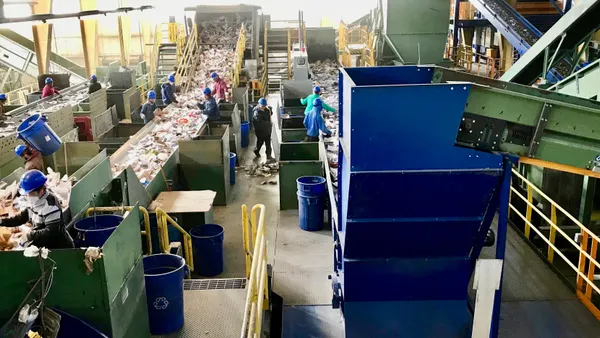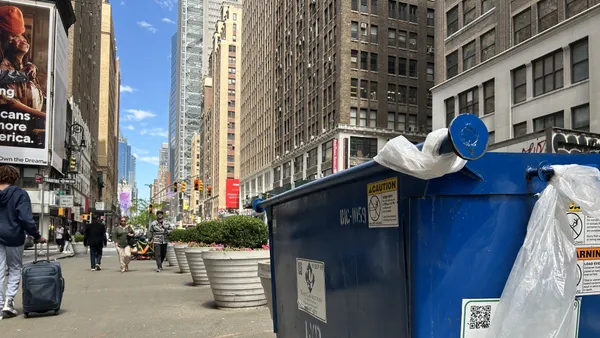Dive Brief:
- Beijing has announced plans to put almost 200 billion yuan ($28.9 billion USD) toward its goal of achieving a 35% residential diversion rate by 2020. Last year, about 8.7 million metric tons of waste were collected in the Chinese capital, as reported by Reuters.
- The city's population has grown rapidly to reach an estimated 22 million people. As residents become more affluent, and environmental regulations become more stringent, the interest in sorting recyclables for money has decreased. Many of these scavengers have reportedly turned to other markets after Beijing closed 82 processing facilities and 1,000 illegal landfills.
- Since 2010, the city has trained 20,000 "Green Armband" workers to help teach residents about recycling and more of them could be on the way. Though even for the residents that can be convinced it's worth their time to separate materials, the level of distrust about what happens to them is still an issue.
Dive Insight:
On a national level, China's 246 cities generated 1.9 billion metric tons of waste in 2015 and the number of waste-to-energy facilities in the country is expected to double in the coming years. Though China is not seen as a world leader when it comes to recycling and has recognized the need for more solutions to handle its waste. Some type of mandatory recycling has been discussed, but would be hard to enforce without incentives or financial penalties.
Some see the country's crackdown on material imports and expansion of more modern processing facilities as a sign that they will have a more closed loop recycling system in the near future. This could help drive efforts to separate and capture material from urban areas, by showing the market demand and economic opportunities. Beijing is also home to more advanced collection infrastructure, such as pneumatic tubes and a fleet of electric sanitation vehicles, that could make this process more efficient.
Engaging with the younger residents that are part of this population boom about their recycling habits will also be key to achieving these goals. The sense of distrust or confusion about how the system works mirrors research in the U.S. and the trends in e-waste generation from new consumption habits are also similar.










